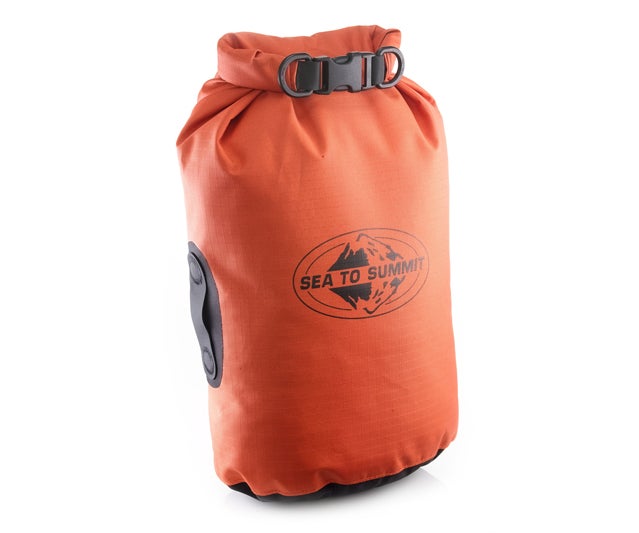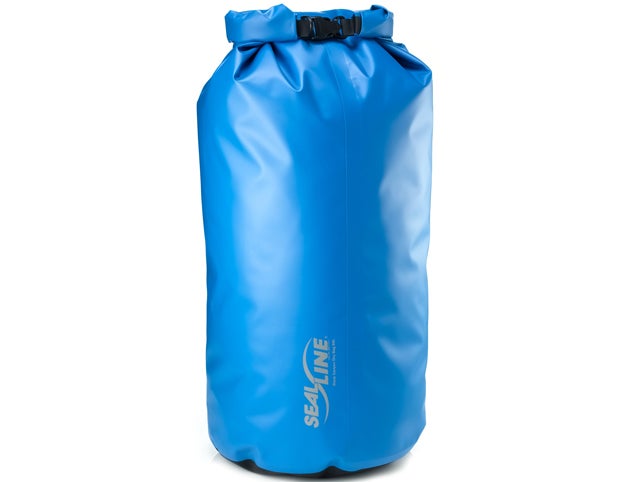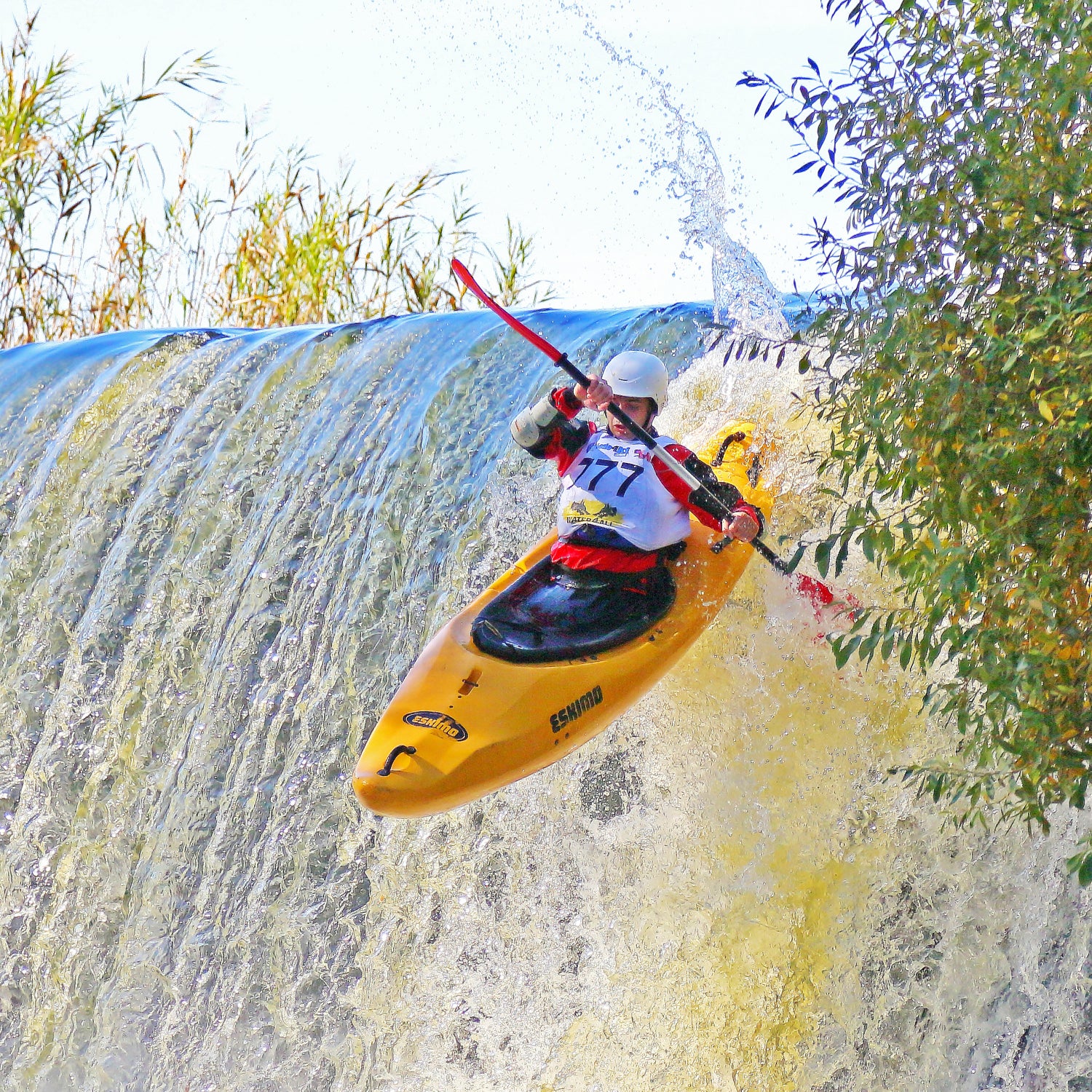Keeping gear dry on the water is important, but it’s not difficult. Your waterproofing options run from super low-tech—garbage bags—to exotic shock-resistant cases.
Stuffing gear into a garbage bag and cinching the top will give you protection from rain, spray, or even a quick dunking, provided the bag bobs with the cinched end up. Garbage bags also come in handy for storing shoes, dry socks, or packs when there’s s a chance of rain, and they’ll even help with actual garbage. I recommend traveling with several.

When the risk of total immersion is high, you’ll want to invest in a purpose-built dry bag. On excellent option is ($32), which has eight liters, or almost 500 cubic inches, of capacity. That’s enough for a sleeping bag, clothing, or a tent. The Big River Dry Bag is a classic roll-top bag made from waterproof material, and to seal it, you simply fold the open end as if you were rolling a towel, then cinch it with a buckle.
For something larger, check out SealLine’s 55 liter ($55). It’s the size of a standard hiking backpack, which means it’ll hold most of the gear you might take on a typical trip. It’s made from a tough and light urethane-coated nylon, and, like Sea to Summit’s bag, it uses a a roll-up top and buckle system to form a seal.

For some items—an expensive camera, for example—I’d urge you to consider a hard case like the ($150). The Pelican is made from super-tough plastic, seals out water with neoprene O-rings, and is filled with egg-crate foam to protect from drops or knocks. And as an added bonus, you also can order it without foam or with padded dividers.


